- Home
- Tom Clancy
Into the Storm: On the Ground in Iraq Page 2
Into the Storm: On the Ground in Iraq Read online
Page 2
Then he was alone with his thoughts. Before he got some rest he wanted to go over some things about the operation ahead and reflect on the events of this day.
There was one thought that would not leave him. "Don't worry, General, we trust you." A soldier in 3rd Armored Division had said that to him on 15 February during one of his many visits to VII Corps units. Now, how am I going to fulfill that trust? he asked himself. It was what the soldiers were thinking--he knew that--and he wanted to be worthy.
During Vietnam, that bond between the soldiers and the country's leaders in Washington had been shattered. It was an open wound. Fred Franks wanted to be one of the commanders who could heal that wound, who could rebuild that trust. It was a powerful, consuming thought on this eve of battle, one that never left him, ever.
THE next day was G-Day, the beginning of the ground attack to liberate Kuwait of Iraqi forces. The Coalition plan was for the U.S. Marines and the Saudis to attack at 0400, 200 kilometers to the east of VII Corps, while the light forces of U.S. XVIII Corps--the 82nd Airborne Division and the 101st Airborne (Air Assault) Division--and the French would attack 100 kilometers to the west. And then the heavy forces--VII Corps, the armored units of XVIII Corps, and the JFCN (the Arab Joint Forces Command North, an Egyptian Corps and a Syrian division)--would attack on G+1, the day after the next, at BMNT (the beginning of morning nautical twilight, or first light), or 0538 GPS local time (they used global positioning systems to give exact time).
What Franks didn't know then was that this night was going to turn out to be the eve of his own VII Corps attack. When he learned of this change of plans the next day, it was to be for him one of the two greatest surprises of the war.
As far as he knew, the plan and the attack times were set, and he was considering nothing different. Nobody had mentioned the possibility of going early, not Third Army, CENTCOM,1 John Yeosock (the Third Army commander, and Franks's immediate superior), or Norm Schwarzkopf. They had hashed out the timing time and again. As far as he knew, they had settled it. The Marines and the Saudis would go into Kuwait and fix Iraqi forces there, and then the heavy forces would go after the RGFC--the Republican Guards Forces Command. VII Corps, the Egyptian Corps, and the heavy part of XVIII Corps were scheduled to attack on G+1 at BMNT.
As he sat there in the silence of his sleeping shelter--an expando van on the back of a five-ton truck--he checked his cigar supply. It was still holding up. Then he lit one as he began to go over in his mind the posture for the attack the day after tomorrow. He had no map, but by now they had been over the plan so many times he had it almost committed to memory. As was his practice, he used the Army's basic problem-solving method and one he himself had taught many times, which went by the acronym METT-T (Mission, Enemy, Terrain, Troops available to you, and Time).
MISSION
The mission was simple: to destroy the RGFC in the VII Corps zone (the corps area of operations) and be prepared to defend northern Kuwait.
ENEMY
The situation was the same as it had been for the past several weeks. The Iraqis had essentially stayed in place, which was not surprising, considering the punishment they would take from the air if they tried any major force repositioning. As far as Fred Franks was concerned, that was just fine. The coalition had them where they wanted them.
Directly in front of VII Corps across the border was the Iraqi VII Corps. Their defense consisted of five infantry divisions, side by side, east to west, and one mechanized division behind them in depth. That defensive line started about twenty kilometers north of the border, with a complex obstacle system of mines, trenches, and defensive bunkers, thicker in the east and less so in the west. In the west, they had left an opening of about forty kilometers, where their defense line curved to the north and west, in order to prevent an envelopment. In military terms, this is called "refusing the flank." The width of their defending infantry divisions was about twenty-five kilometers each, with a total depth of twenty to thirty kilometers.
The VII Corps plan was for the 1st Infantry Division to penetrate one of these divisions in a breach mission, while an enveloping force, consisting of the 2nd Armored Cavalry Regiment, the 1st Armored Division, and the 3rd Armored Division, would simultaneously sweep around the Iraqi flank and attack toward the RGFC. The British 1st Armored Division would meanwhile pass through the 1st INF (infantry) breach, once that was secured, and attack toward the east to prevent Iraqi forces from threatening the VII Corps flank.
A big disagreement ahead of time had concerned the estimated width and depth of Iraqi frontline division sectors. U.S. intelligence thought the sectors were twenty-five kilometers wide and not so deep; the British thought the Iraqi division sectors were a more narrow fifteen kilometers and deeper. The British were correct, as it turned out, except that the division sectors got wider the farther west you went. That was of significant consequence later, as the British attack hit the command posts of the Iraqi frontline divisions rather than passing to their rear.
Behind the Iraqi VII Corps, the Republican Guards, Iraq's best, had not moved, either. There were six RGFC divisions, three armored/mechanized and three infantry (each Guards division had three brigades), with the closest of these about 150 kilometers from the VII Corps's line of departure. Though at this point, all six were in the VII Corps zone of attack, from the start Franks's intent was to aim VII Corps at the three Guards armored/mechanized divisions (Tawalkana, Medina, and Hammurabi). They knew about where these heavy divisions were, as well as the locations of the three RGFC infantry divisions.
Because air had been able to fix the RGFC strategically (the Iraqis knew that if they tried any major moves, they'd get hit hard), there had not been any apparent major force repositioning since the air campaign had started on 17 January. But air had not completely immobilized the RGFC. The Guards were able to move up to brigade-sized units locally in tactical repositioning, and they had done so frequently. Since immediate intelligence about these changes in position was not available to VII Corps, they would know only approximately where the RGFC brigades were located at any given time.
In other words, that meant that the Iraqi armored forces retained tactical freedom of movement and could move from twenty-five to fifty kilometers to adjust their positions. Thus, attacking units would not know for sure what was just beyond visual range. It would therefore be up to attacking troops to fix the enemy tactically, and then to destroy them. That distinction would dictate Franks's tactics and those of his subordinate unit commanders as they approached RGFC locations. It was likely that attacking units would be involved in a great many "meeting engagements."2
As he pictured in his mind the layout of Iraqi forces, Franks turned his attention to some of the number designations of Iraqi brigades and divisions. They had been the subject of many discussions among intelligence staffs--was it the 12th Division over here, and the 52nd Division over there, or the other way around? These were interesting discussions, and important historically to get the record straight, yet for the purposes of the upcoming attack, he did not think such matters had any practical consequence. Getting unit designations right is valuable for history books, but what he really needed to know was how many divisions and brigades there were, and where they were located. And he had a very good idea of that.
Turning his thoughts back to the Iraqi VII Corps, Franks pictured their five infantry divisions forward on line, behind a barrier system that was less complex moving west from the Wadi al Batin. (The Wadi is an ancient, dry river valley, angling south and west out of Iraq into Saudi Arabia. Along the way, the Wadi defines the western boundary between Kuwait and Iraq.) The division numbers from east to west were the 27th; 25th; 31st; 48th; and 26th. The tactical reserve, located behind the 25th and 31st divisions at a depth of fifty to seventy-five kilometers, was the 12th Armored--actually the 52nd (it was one of the unit designations they'd gotten wrong). Again, it didn't really matter to Franks whether it was numbered the 52nd or the 152nd. It did matter that
there was an Iraqi mechanized division that could move; if it could move, it could interdict his logistics or otherwise get in the way of his attacking force. In order to make sure that didn't happen, he had assigned to the British the mission of defeating that division.
The Iraqi VII Corps's westernmost division, the 26th, had two brigades forward in the defensive line. In order to refuse that western flank, they had an infantry brigade in depth, stretching perhaps fifty kilometers to the rear of the defensive line. It was this 26th Division that the 1st Infantry Division, the Big Red One, would penetrate in their breach mission and that the enveloping force would overrun.
The Iraqi VII Corps had assigned their artillery to frontline divisions and to their subordinate brigades located with those units. Other artillery retained under their corps control was positioned to support the frontline divisions. Total gun count along that initial Iraqi VII Corps defense before the air attacks began was approximately 400 to 500, with over half that in range of the 1st INF breach.
Though Franks was relatively sure about what they were facing in Iraqi VII Corps, he was less sure of the organization of their deep forces and how they would fight. He knew the Guards were their best and most loyal forces. They also were the best equipped, mostly with Russian-made T-72s, BMPs, and self-propelled artillery. In the Iran-Iraq War, they had done well. In the invasion of Kuwait, they had moved and fought efficiently. Even though air had hit them hard, there wasn't much doubt that the RGFC would fight.
Franks's key question, then, was what the Republican Guards would attempt to do when or if they discovered the attack. Defend? Maneuver toward VII Corps units to meet their attack? Attempt to escape up Highway 8 to Baghdad? (Highway 8 was the main route on the south side of the Euphrates between Basra and Baghdad.) Retreat toward Basra? Franks's aim was to fix them where they were, or to surprise them before they could move.
There were other Iraqi heavy divisions in the corps's zone as well, the 10th and 12th Armored divisions, formed into what he discovered later was the "Jihad Corps." What would these intermediate forces do? In addition, another heavy division, the 17th, was located near the RGFC, but was not in the VII Corps zone. The presence of these formations and their subordination to the Guards would make a difference in how the Iraqi high command chose to fight VII Corps. Not counting the three RGFC infantry divisions, that gave the Iraqis a six-division theater reserve, three RGFC heavy divisions and three other armored divisions.The forces arrayed by the Coalition spread from the Persian Gulf to approximately 600 kilometers inland. VII Corps's mission was to destroy the Republican Guard in their sector of attack.
The Iraqi defenses were arrayed in three belts. The frontline consisted primarily of infantry units defending behind a massive obstacle belt of minefields, trenches, and wire. The tactical reserve was poised to reinforce wherever the front lines were breached. The operational reserve--the Republican Guards and other units--defended the southern approaches into Iraq and were capable of counterattacking the Coalition force.
As he played all this in his mind's eye, he also considered something else: the location of the Iraqi army was only one piece of the intelligence picture. The other piece was how strong were they? What was their ability to fight? Even at this point, he was not very confident that he knew the answers to that.
In his zone of attack were two very different-type forces. Except for their mechanized infantry reserve, the Iraqi VII Corps consisted of five frontline conscript infantry divisions, fixed in a World War I-type defensive arrangement. VII Corps had had some combat against these units over the previous two weeks, and prisoners and deserters had been taken. After these Iraqi soldiers had been questioned about their dispositions, strength, unit identification, and morale, Franks and his commanders had gotten a pretty clear picture of the Iraqi VII Corps. The infantry divisions were brittle and would easily crack at the first hard, sustained ground attack. They'd been hurt badly by U.S. air, Apache, and artillery attacks, and by the desertion of some of their own leadership. The conclusion was that they were between 50 and 75 percent strength. They did not have much fight left in them.
But Franks had no such clear picture of the RGFC, or of the other Iraqi armored/mechanized formations. Prewar air campaign objectives had called for the reduction of RGFC strength by 50 percent by the time the ground war started. Theater had selected that number based on an analysis of friendly and enemy force ratios. If that figure was achieved, they'd thought, VII Corps would have enough combat power available to finish the destruction in direct ground combat.
As it happened, none of the ground commanders had participated in setting this objective. And when they had learned of it, most had thought it would not be achievable unless the attacks went on a long time.
The real problem was not the specific objective (whether 50 percent or whatever). The problem was that there was no reliable method for determining if the objective had actually been achieved. There was no way of knowing, in fact, if they were even close. Precise bomb-damage assessment (BDA) was difficult. It was relatively easy to figure damage done to a fixed target such as a bridge or an aircraft shelter by a precision-guided weapon, but damage against mobile armored units by dumb bombs or 30-mm cannons from 10,000 feet and higher--now, that was harder.
So VII Corps estimates of Iraqi RGFC strength remained quite conservative. Though in the plans they had briefed they had assumed the stated objective of 50 percent, they always hedged their bets. Their own estimate was that Guards and other Iraqi armored/mechanized units would be closer to 75 percent when VII Corps hit them. Corps also thought that, unlike the frontline infantry divisions, the Guards would fight, and not run away or desert.
As Franks weighed these numbers, he became aware that the real art was to assess enemy fighting capabilities, competence, and willingness to fight. Locating them and determining numbers was the easy part. It was almost scientific. It was this other part that was the art. You wanted neither to overestimate nor underestimate the enemy.
Fred Franks's experience in Vietnam had influenced him on this matter. If he erred, he wanted to err on the side of overestimating the enemy. He wanted to be sure that, this time, the results would be different.
IN the final analysis, Franks knew that he had a decent intelligence picture for Iraqi unit locations but a poor picture of RGFC strength, fighting capability, and competence.
He was aware again that he had to come to a conclusion. He would also need to predict and influence their tactical maneuver. Would VII Corps be able to keep them fixed where they were and surprise them in the size and direction of the attack? Would they come toward his advancing units? Would they attempt to go up Highway 8? Would they attempt to escape out of the theater? And he also knew he would have to decide all that about twenty-four hours after the VII Corps attack at first light on 25 February.
TERRAIN
From his perspective as corps commander, Franks had not spent a lot of time examining terrain. In Europe it had been vital to determine key terrain--the pieces of ground that dominate an area--and to look very closely at avenues of approach--the areas that allowed rapid movement by large formations in the direction in which you or the enemy wanted to go. They had examined the cross-country traffic ability--the capability of the terrain to allow heavy armored movement--and looked at roads, bridges, airfields, towns, and cities, and at how they might influence operations and logistics.
Not much of that mattered here. This was desert. Fighting here was like naval surface warfare on the open ocean. Here they could essentially take their fleet anywhere, and in almost any formation they wanted. Now smaller units in the corps had to be concerned with the normal rises and drops in the desert as they attacked. They also had to be aware that in some places--especially in 1st AD sector--the sand was softer than in others (and thus less trafficable for heavy armor), and that in some places there were narrow defiles.
So that they could have the best available intel about such areas, a Special Forces night flig
ht had been sent forward into the VII Corps zone to look over the terrain. When the flight had determined that the terrain would hold anything Franks wanted it to, he'd figured he could maneuver his fleet anywhere. So could the Iraqis, he realized. But as it turned out, they anchored their fleet with short chains. Since they had no confidence in cross-desert maneuver (and they did not have access to GPS receivers), the Iraqis mainly stuck to their roads.
In fact, weather turned out to be a bigger factor. Severe local sandstorms, called shamals, hid VII Corps attacks from Iraqis, but also limited some use of Apaches, and troops had to fight through cold night temperatures and torrential rains.
TROOPS
The VII Corps situation was excellent. The plan was sound and well understood by all units; they had rehearsed and war-gamed it. The Corps was at full strength, and the equipment availability of major combat assets such as tanks and Bradleys was at 97 percent. That was better than in the Corps's best Cold War days in Germany as part of NATO.
The commanders were ready, and the teamwork among them was tight. It was a talented team. Franks's major maneuver commanders were Major General Tom Rhame, 1st Infantry Division; Major General Ron Griffith, 1st Armored Division; Major General Paul "Butch" Funk, 3rd Armored Division; Major General Rupert Smith, 1st (U.K.) Armored Division; Colonel Don Holder, 2nd Armored Cavalry Regiment; and Colonel Johnnie Hitt, 11th Aviation Brigade. Brigadier General John Tilelli commanded the 1st Cavalry Division, which was to be released to CENTCOM as theater reserve the next day. The corps artillery commander was Brigadier General Creighton Abrams; and Brigadier General Bob McFarlin was the commander of the Corps's almost 27,000-soldier Support Command.

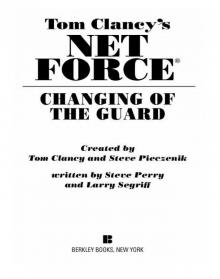 Changing of the Guard
Changing of the Guard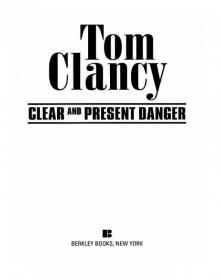 Clear and Present Danger
Clear and Present Danger Hounds of Rome
Hounds of Rome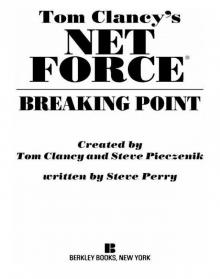 Breaking Point
Breaking Point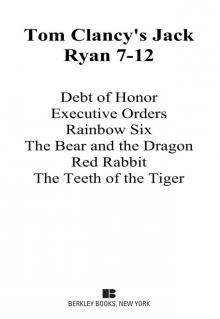 Tom Clancy's Jack Ryan Books 7-12
Tom Clancy's Jack Ryan Books 7-12 Full Force and Effect
Full Force and Effect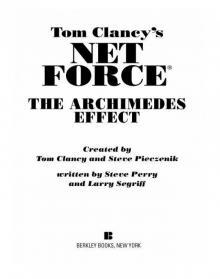 The Archimedes Effect
The Archimedes Effect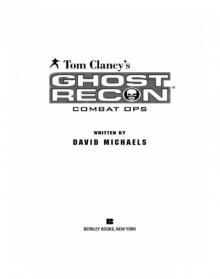 Combat Ops
Combat Ops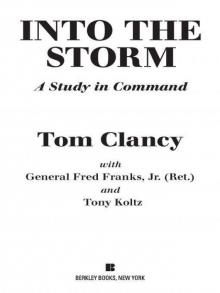 Into the Storm: On the Ground in Iraq
Into the Storm: On the Ground in Iraq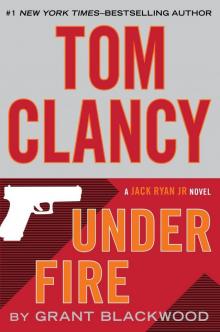 Under Fire
Under Fire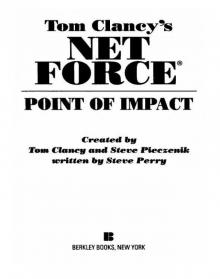 Point of Impact
Point of Impact Red Rabbit
Red Rabbit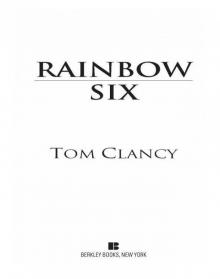 Rainbow Six
Rainbow Six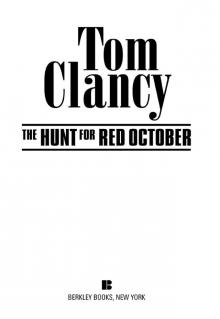 The Hunt for Red October
The Hunt for Red October The Teeth of the Tiger
The Teeth of the Tiger Conviction (2009)
Conviction (2009)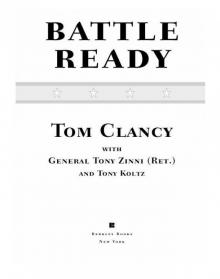 Battle Ready
Battle Ready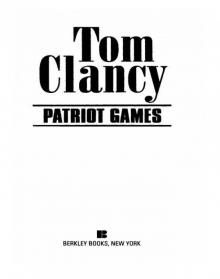 Patriot Games
Patriot Games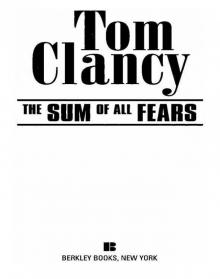 The Sum of All Fears
The Sum of All Fears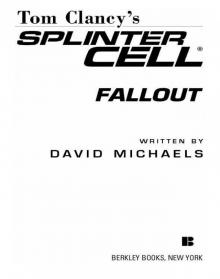 Fallout (2007)
Fallout (2007) Red Storm Rising
Red Storm Rising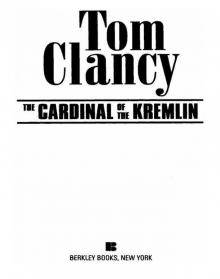 The Cardinal of the Kremlin
The Cardinal of the Kremlin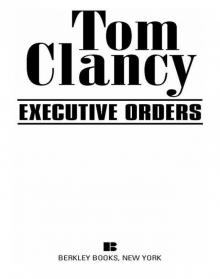 Executive Orders
Executive Orders Lincoln, the unknown
Lincoln, the unknown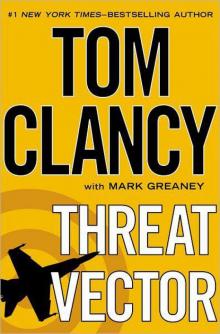 Threat Vector
Threat Vector The Hunted
The Hunted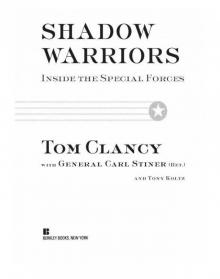 Shadow Warriors: Inside the Special Forces
Shadow Warriors: Inside the Special Forces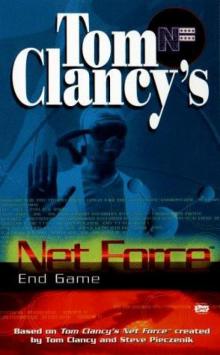 End Game
End Game Special Forces: A Guided Tour of U.S. Army Special Forces
Special Forces: A Guided Tour of U.S. Army Special Forces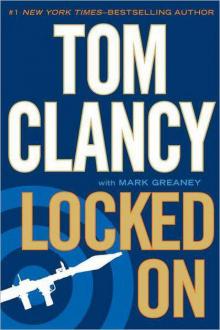 Locked On
Locked On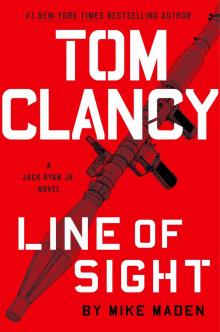 Line of Sight
Line of Sight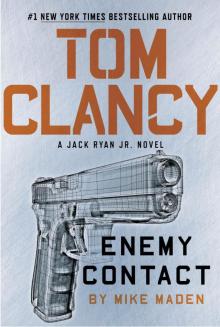 Tom Clancy Enemy Contact - Mike Maden
Tom Clancy Enemy Contact - Mike Maden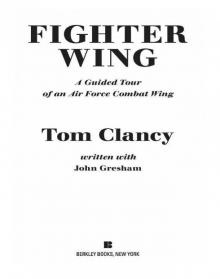 Fighter Wing: A Guided Tour of an Air Force Combat Wing
Fighter Wing: A Guided Tour of an Air Force Combat Wing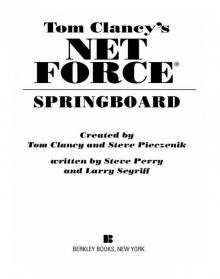 Springboard
Springboard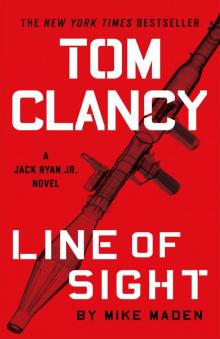 Line of Sight - Mike Maden
Line of Sight - Mike Maden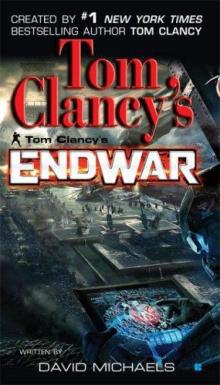 EndWar
EndWar Dead or Alive
Dead or Alive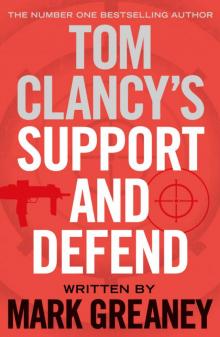 Tom Clancy Support and Defend
Tom Clancy Support and Defend Checkmate
Checkmate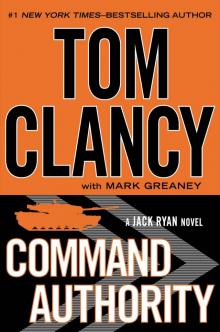 Command Authority
Command Authority Carrier: A Guided Tour of an Aircraft Carrier
Carrier: A Guided Tour of an Aircraft Carrier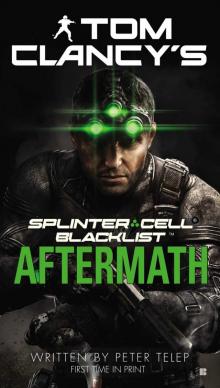 Blacklist Aftermath
Blacklist Aftermath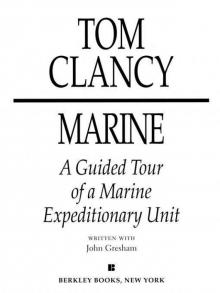 Marine: A Guided Tour of a Marine Expeditionary Unit
Marine: A Guided Tour of a Marine Expeditionary Unit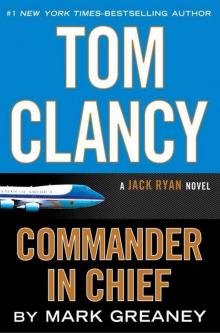 Commander-In-Chief
Commander-In-Chief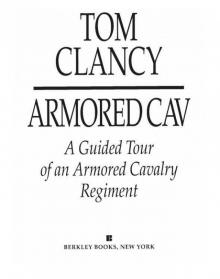 Armored Cav: A Guided Tour of an Armored Cavalry Regiment
Armored Cav: A Guided Tour of an Armored Cavalry Regiment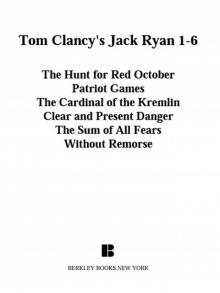 Tom Clancy's Jack Ryan Books 1-6
Tom Clancy's Jack Ryan Books 1-6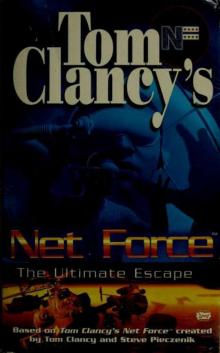 The Ultimate Escape
The Ultimate Escape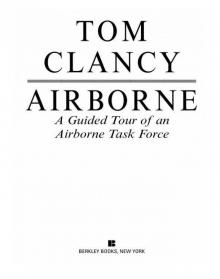 Airborne: A Guided Tour of an Airborne Task Force
Airborne: A Guided Tour of an Airborne Task Force Debt of Honor
Debt of Honor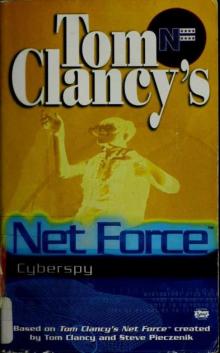 Cyberspy
Cyberspy Point of Contact
Point of Contact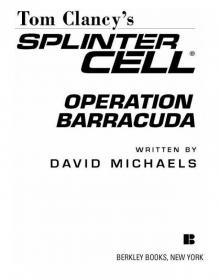 Operation Barracuda (2005)
Operation Barracuda (2005)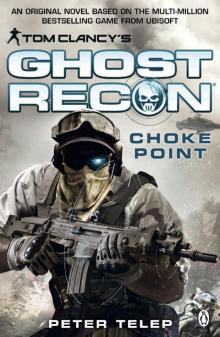 Choke Point
Choke Point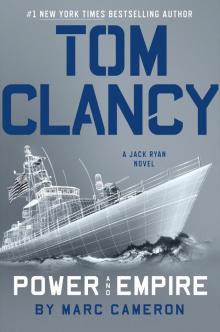 Power and Empire
Power and Empire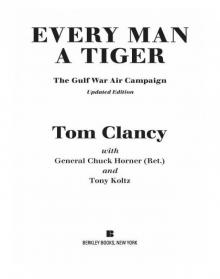 Every Man a Tiger: The Gulf War Air Campaign
Every Man a Tiger: The Gulf War Air Campaign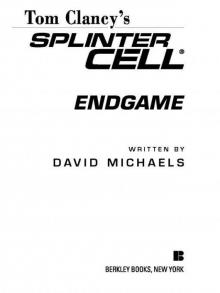 Endgame (1998)
Endgame (1998)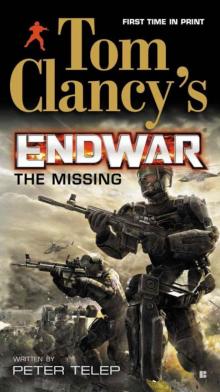 EndWar: The Missing
EndWar: The Missing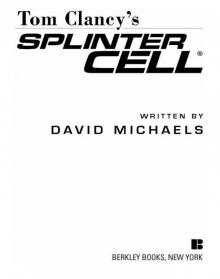 Splinter Cell (2004)
Splinter Cell (2004) The Great Race
The Great Race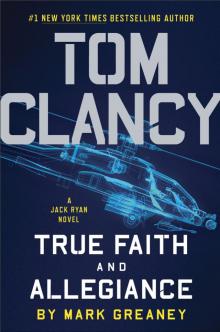 True Faith and Allegiance
True Faith and Allegiance Deathworld
Deathworld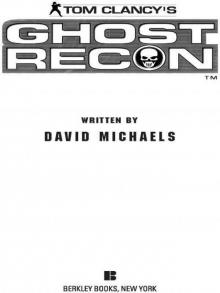 Ghost Recon (2008)
Ghost Recon (2008) Duel Identity
Duel Identity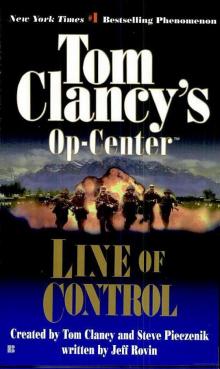 Line of Control o-8
Line of Control o-8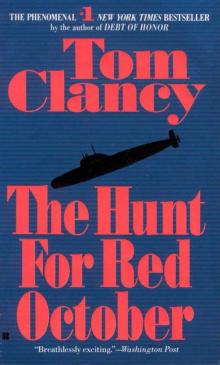 The Hunt for Red October jr-3
The Hunt for Red October jr-3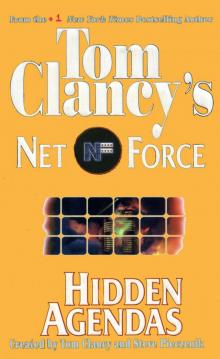 Hidden Agendas nf-2
Hidden Agendas nf-2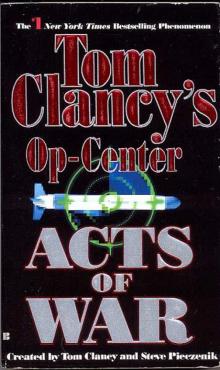 Acts of War oc-4
Acts of War oc-4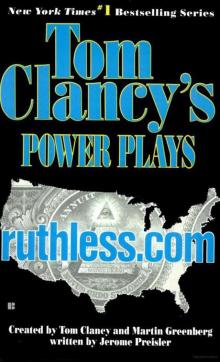 Ruthless.Com pp-2
Ruthless.Com pp-2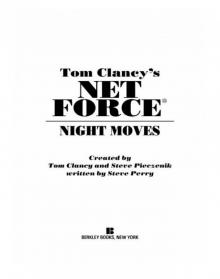 Night Moves
Night Moves The Hounds of Rome - Mystery of a Fugitive Priest
The Hounds of Rome - Mystery of a Fugitive Priest Into the Storm: On the Ground in Iraq sic-1
Into the Storm: On the Ground in Iraq sic-1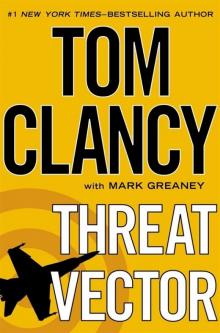 Threat Vector jrj-4
Threat Vector jrj-4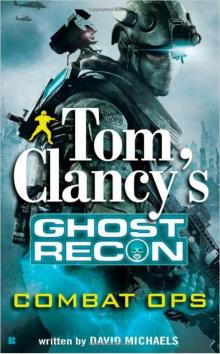 Combat Ops gr-2
Combat Ops gr-2 Virtual Vandals nfe-1
Virtual Vandals nfe-1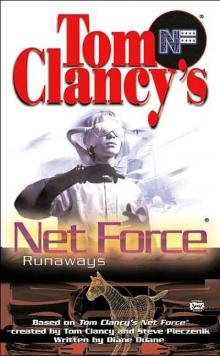 Runaways nfe-16
Runaways nfe-16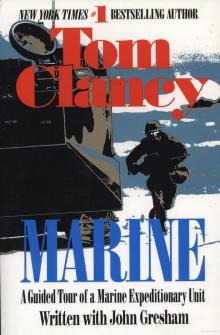 Marine: A Guided Tour of a Marine Expeditionary Unit tcml-4
Marine: A Guided Tour of a Marine Expeditionary Unit tcml-4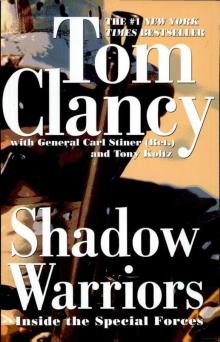 Shadow Warriors: Inside the Special Forces sic-3
Shadow Warriors: Inside the Special Forces sic-3 Jack Ryan Books 1-6
Jack Ryan Books 1-6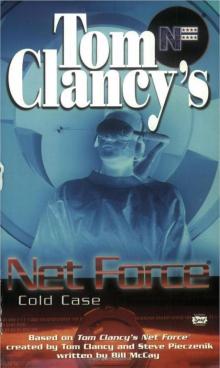 Cold Case nfe-15
Cold Case nfe-15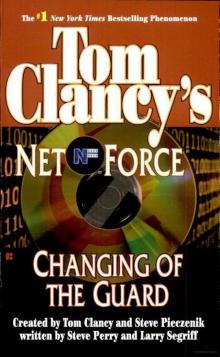 Changing of the Guard nf-8
Changing of the Guard nf-8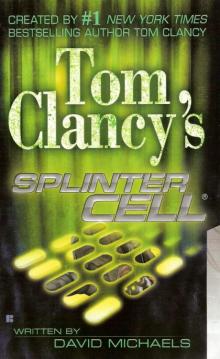 Splinter Cell sc-1
Splinter Cell sc-1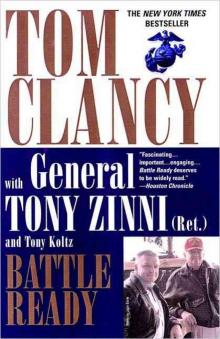 Battle Ready sic-4
Battle Ready sic-4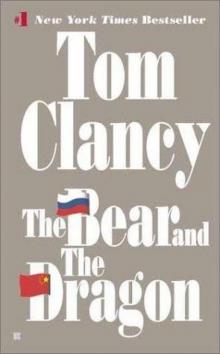 The Bear and the Dragon jrao-11
The Bear and the Dragon jrao-11 Fighter Wing: A Guided Tour of an Air Force Combat Wing tcml-3
Fighter Wing: A Guided Tour of an Air Force Combat Wing tcml-3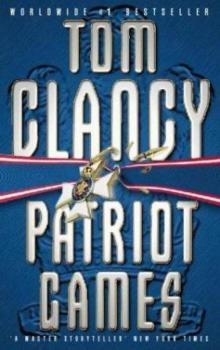 Patriot Games jr-1
Patriot Games jr-1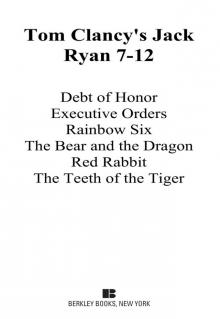 Jack Ryan Books 7-12
Jack Ryan Books 7-12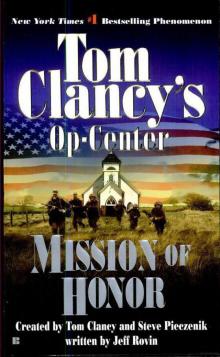 Mission of Honor o-9
Mission of Honor o-9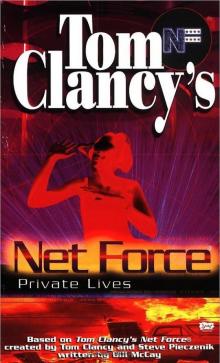 Private Lives nfe-9
Private Lives nfe-9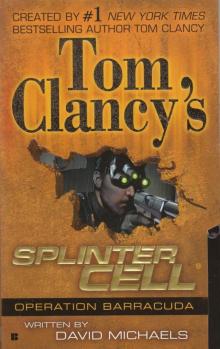 Operation Barracuda sc-2
Operation Barracuda sc-2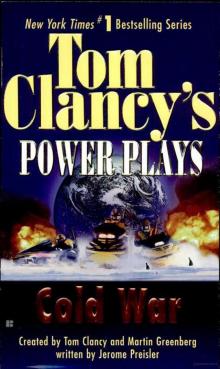 Cold War pp-5
Cold War pp-5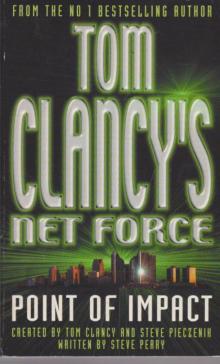 Point of Impact nf-5
Point of Impact nf-5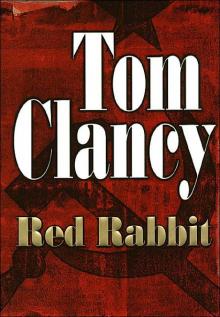 Red Rabbit jr-9
Red Rabbit jr-9 The Deadliest Game nfe-2
The Deadliest Game nfe-2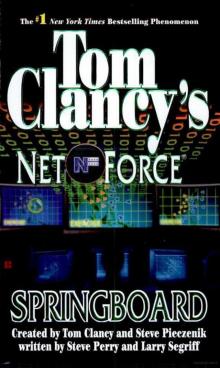 Springboard nf-9
Springboard nf-9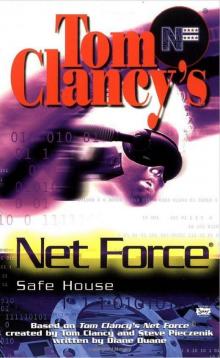 Safe House nfe-10
Safe House nfe-10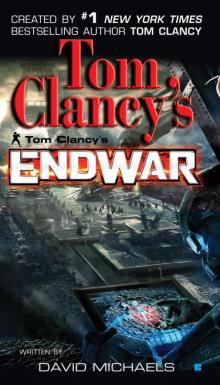 EndWar e-1
EndWar e-1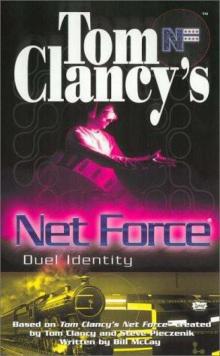 Duel Identity nfe-12
Duel Identity nfe-12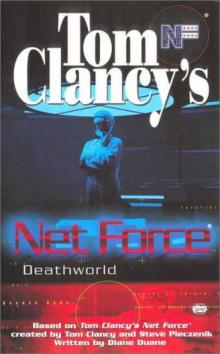 Deathworld nfe-13
Deathworld nfe-13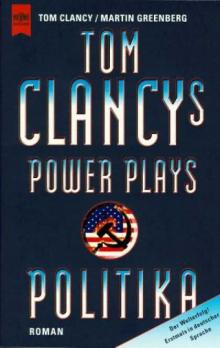 Politika pp-1
Politika pp-1 Rainbow Six jr-9
Rainbow Six jr-9 Tom Clancy's Power Plays 1 - 4
Tom Clancy's Power Plays 1 - 4 Endgame sc-6
Endgame sc-6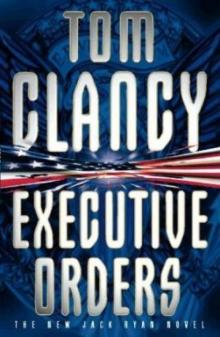 Executive Orders jr-7
Executive Orders jr-7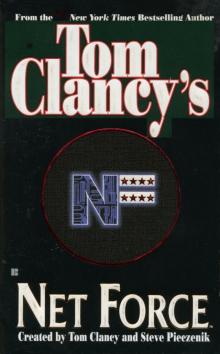 Net Force nf-1
Net Force nf-1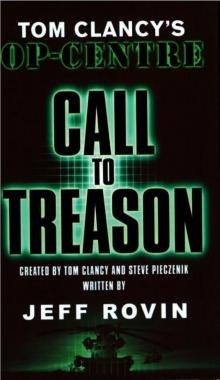 Call to Treason o-11
Call to Treason o-11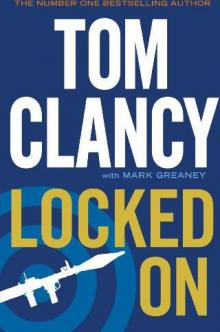 Locked On jrj-3
Locked On jrj-3 Against All Enemies
Against All Enemies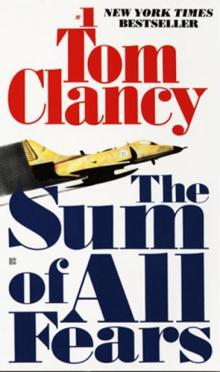 The Sum of All Fears jr-7
The Sum of All Fears jr-7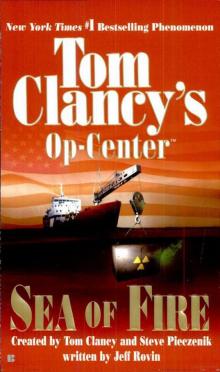 Sea of Fire o-10
Sea of Fire o-10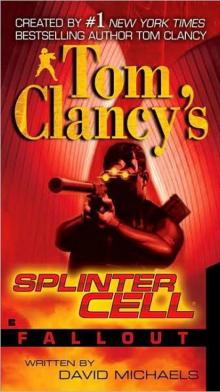 Fallout sc-4
Fallout sc-4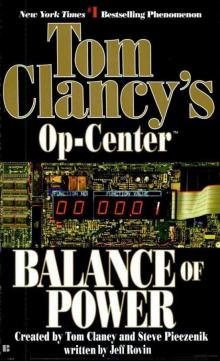 Balance of Power o-5
Balance of Power o-5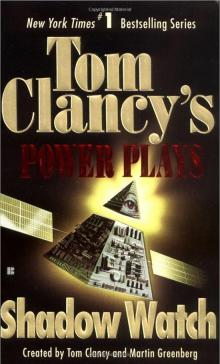 Shadow Watch pp-3
Shadow Watch pp-3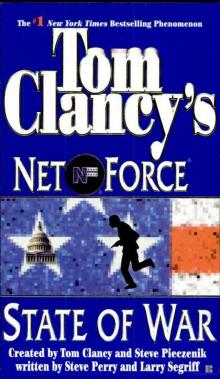 State of War nf-7
State of War nf-7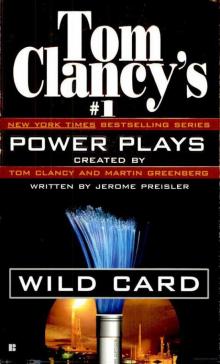 Wild Card pp-8
Wild Card pp-8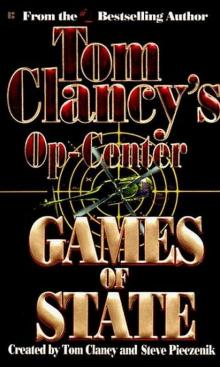 Games of State o-3
Games of State o-3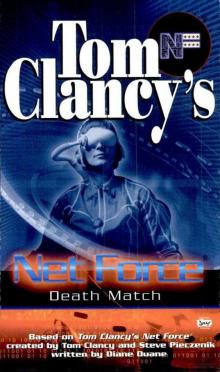 Death Match nfe-18
Death Match nfe-18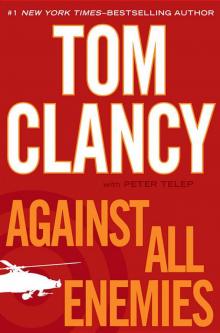 Against All Enemies mm-1
Against All Enemies mm-1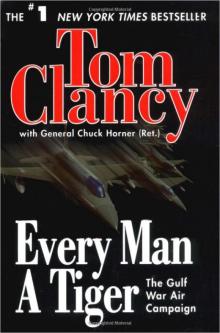 Every Man a Tiger: The Gulf War Air Campaign sic-2
Every Man a Tiger: The Gulf War Air Campaign sic-2 Cybernation nf-6
Cybernation nf-6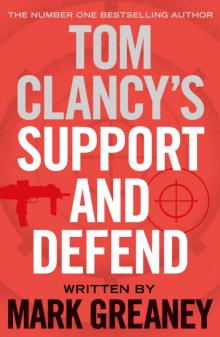 Support and Defend
Support and Defend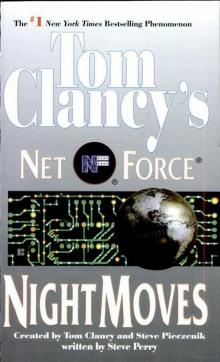 Night Moves nf-3
Night Moves nf-3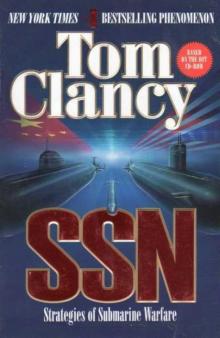 SSN
SSN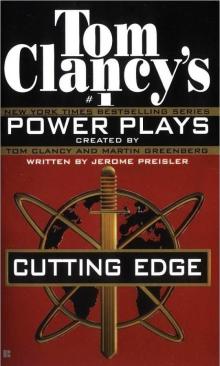 Cutting Edge pp-6
Cutting Edge pp-6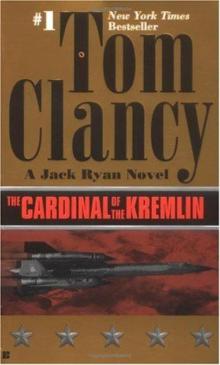 The Cardinal of the Kremlin jrao-5
The Cardinal of the Kremlin jrao-5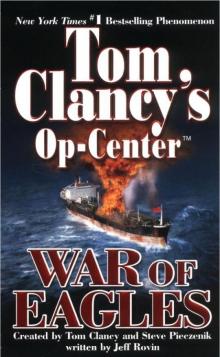 War of Eagles o-12
War of Eagles o-12 Op-Center o-1
Op-Center o-1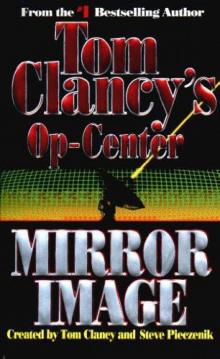 Mirror Image o-2
Mirror Image o-2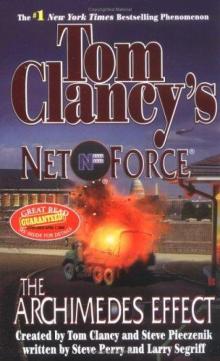 The Archimedes Effect nf-10
The Archimedes Effect nf-10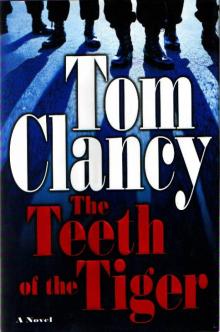 Teeth of the Tiger jrj-1
Teeth of the Tiger jrj-1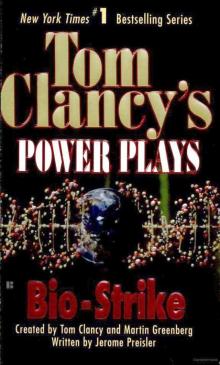 Bio-Strike pp-4
Bio-Strike pp-4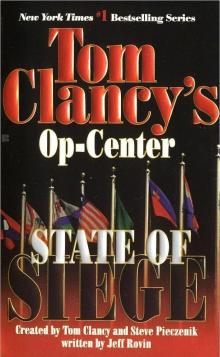 State of Siege o-6
State of Siege o-6 Debt of Honor jr-6
Debt of Honor jr-6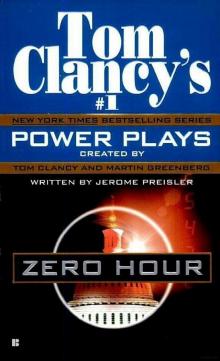 Zero Hour pp-7
Zero Hour pp-7 Ghost Recon gr-1
Ghost Recon gr-1 Command Authority jr-10
Command Authority jr-10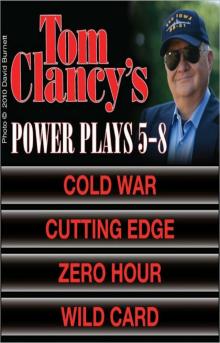 Tom Clancy's Power Plays 5 - 8
Tom Clancy's Power Plays 5 - 8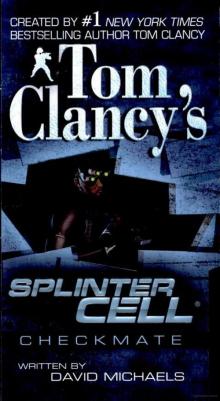 Checkmate sc-3
Checkmate sc-3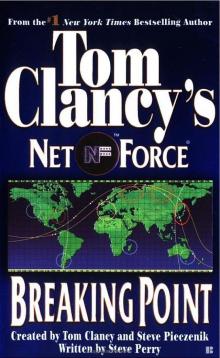 Breaking Point nf-4
Breaking Point nf-4 Gameprey nfe-11
Gameprey nfe-11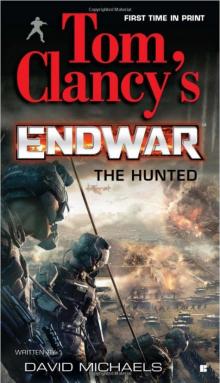 The Hunted e-2
The Hunted e-2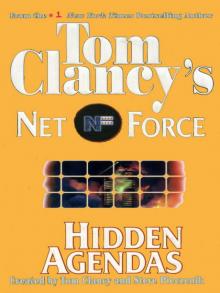 Hidden Agendas
Hidden Agendas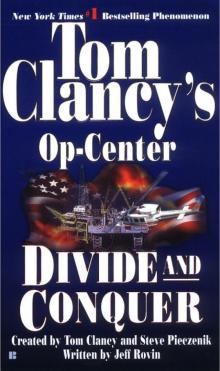 Divide and Conquer o-7
Divide and Conquer o-7